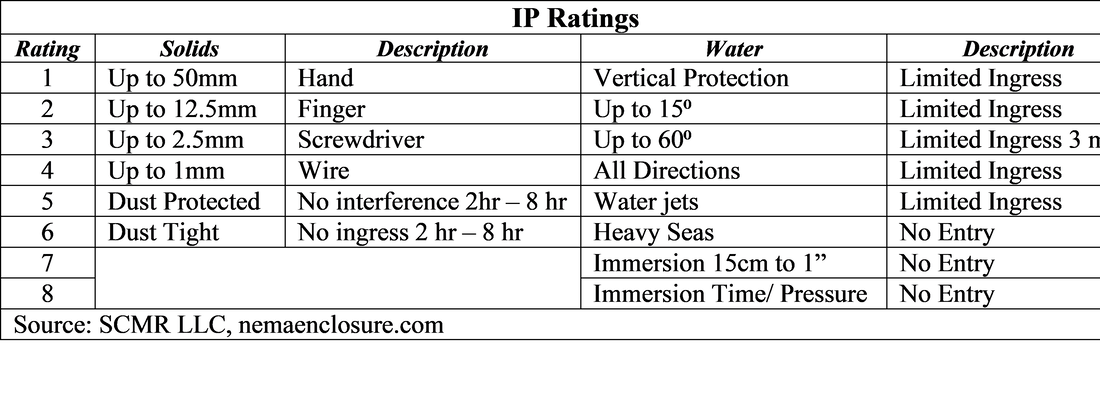A Different Kind of IP
The rating is based on tests performed on each device model to determine its ability to protect itself from the ‘ingress’ of solids, usually dust and similar particles, and water. The IP rating is therefore two numbers, the first of which ranges from 1 to 6 (solids) and the second, ranging from 1 to 8, and occasionally has a 3rd number that is unofficial.
The ‘solids’ number is relatively easy to understand, the lowest numbers (1-4) indicate a device’s protection against objects ranging from a hand to a wire, so if you can’t disturb the operation of the device with your finger but you could pry it open with a screwdriver you get a 2 rating. Dust becomes an issue with the higher numbers, where 5 means that the device will be protected for between 2 and 8 hours from dust that would affect the operation of the device. That could mean that some dust does get into the device but not enough to ruin it for at least 2 hours. The 6 (top) rating for solids means that no dust at all will get in for between 2 hours and 8 hours. While we in the US are not used to environments where dust is that much of a problem, there are many overseas locations where particulate matter is a problem in everyday life. It is those locations, and it could be from pollution or dust particles, that the Solids IP number has meaning.
Water is the 2nd part of the rating, and here is where marketing tends to focus as smartphones are routinely dropped in sinks, toilets, and run through washing machines, aside from use in unintentionally or intentionally wet locations. The ratings for water start with the device being vertical and having drops of water on It, to full immersion in water for an extended period and under pressure. Most of the in-between ratings are for various angles of both the device and the water, which allow for some water to enter the device. Water ratings 6 and above do not allow any water to enter the device for the allocated time.
Most smartphones have such ratings, with a few examples listed below, however one of the negative selling points for foldable smartphones has been the hinge that allows the device to open and close. Early models were subject to the entry of particles that caused the hinge to operate incorrectly and crease the display. Such problems have been reduced or eliminated with updated hinge designs that keep dust particles out of the device, however no foldable has yet to be IP rated, meaning they are still subject to dust and water damage to an unknown degree. That said, Samsung Electronics (005930.KS) has indicated that the release of the Samsung Galaxy Z Fold 3 and the Galaxy Z Flip 2 (expected June and July) will be the first foldable to have an official IP rating, giving customers some idea of how these devices will stand up to daily life. No hint as to what the rating might be has been given.



 RSS Feed
RSS Feed